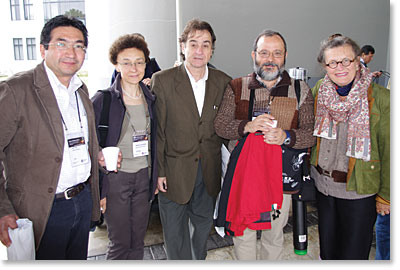Collaborating for Cures
I am very pleased to begin my year as president of SPIE with the opportunity to share a few thoughts on my own field within photonics—biomedical optics applied to oncology—and to congratulate my colleagues whose work is spotlighted in an article about laser medicine in this issue of SPIE Professional.
Lasers have been used in medicine virtually since the first ruby laser was invented. With differing properties inherent in different wavelengths, we have been able to develop many types of lasers suitable for varying uses. Laser medicine is integral in the practice of dermatology, ophthalmology, and other specialties, as well as in oncology.
The first medical applications of lasers were in ophthalmology, and still this is an application area of great value. Furthermore, lasers have applications in surgery, with the benefit of less blood being spilled, and in diagnostics, with the ability to detect and pinpoint early changes in tissue. Some types of laser therapy, such as photodynamic therapy (PDT), have the ability to effectively deliver a laser-based cure with light, without damaging other nearby organs and tissues.
In oncology, we know that the most important prognostic factor in cancer treatment is early discovery. For tumors detected during an early, noninvasive stage, we see a high cure rate of more than 90%.
Clinical applications of optical and laser spectroscopy such as laser-induced fluorescence diagnostics (LIF) enable us to detect tumors much earlier than is possible with conventional diagnostics that focus on structural changes in tissue. Not only can we detect malignancies earlier, but the methods are noninvasive and provide the clinician with results in real time.
As an active clinical researcher, physician, and professor in oncology at Lund University Hospital in Sweden, I am also continually in contact with patients to learn what their real needs are and to see what new technologies have to offer. As a result, I have been able to introduce new treatment modalities for the benefit of my patients. Every week we meet patients with skin malignancies and can offer them minimally invasive PDT with fast healing and good cosmetic results.
New techniques have been developed at my university in a close interdisciplinary collaboration with laser physicists, including my husband, professor Sune Svanberg. At the moment, we are planning early clinical work with a new modality for non-invasive gas monitoring based on laser spectroscopy for surveillance of premature newborn babies. The hope is that we will be able to monitor the gas exchange in their not fully mature lungs without arterial blood sampling and x-ray based techniques.
In our field, we work in an interdisciplinary fashion, encompassing both the medical and technological perspectives. It is useful to learn about the experience of colleagues in other fields, through the exchange of information in technical conference presentations and publications.
Through understanding the possibilities of other disciplines, we can understand more about what photonics can do in our own fields of medicine.

SPIE brings together our interconnected communities in many ways. Through SPIE Photonics West, with its symposia on topics in lasers, biomedical optics, MOEMS/MEMS, and optoelectronics, the Society provides an extremely valuable forum for information exchange and interdisciplinary connection. Following the event, papers published in the SPIE Digital Library continue to provide us with the opportunity to learn more about what other researchers have learned.
I look forward to meeting more colleagues all over the world throughout the year ahead, and I know I will learn much from you about the many ways photonics is used to improve and even save lives.
In this issue of SPIE Professional, several colleagues discuss recent advances in laser medicine.
Rox Anderson (Wellman Center for Photomedicine at Harvard University) talks about a few of the considerations for choosing lasers for dermatology applications such as removing port wine stains and other birthmarks, or in ophthalmology, for reattaching retinas in damaged eyes.
Abraham Katzir (Tel Aviv University) tells about using infrared lasers to measure melanomas and other laser-based systems to replace the x-ray examinations used in mammography.
James Fujimoto (Massachusetts Institute of Technology) talks about potential new uses for optical coherence tomography (OCT), currently used in ophthalmology for diagnosing glaucoma and retinal disease but being examined for its potential in cardiology to look for unstable plaque within arteries.
Have a question or comment about this article? Write to us at spieprofessional@spie.org.



